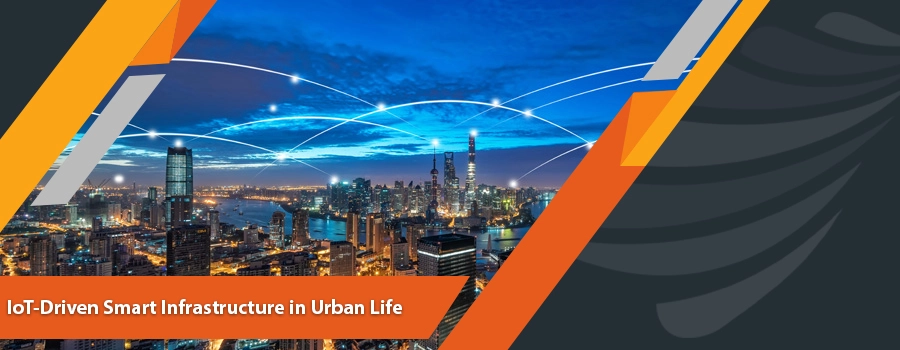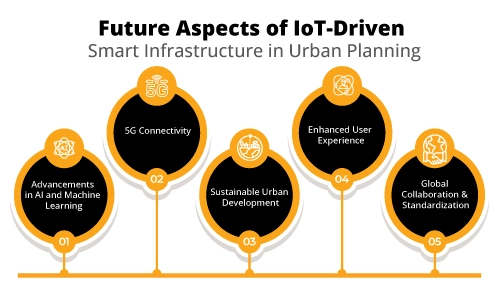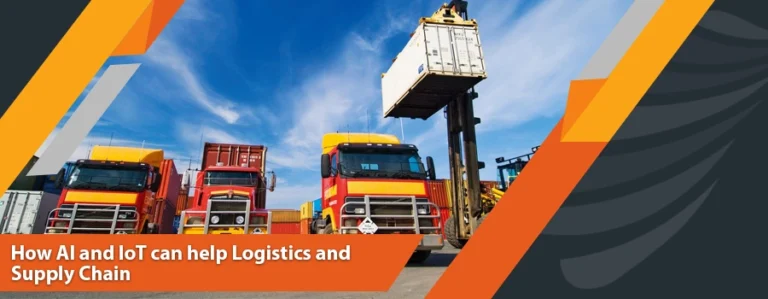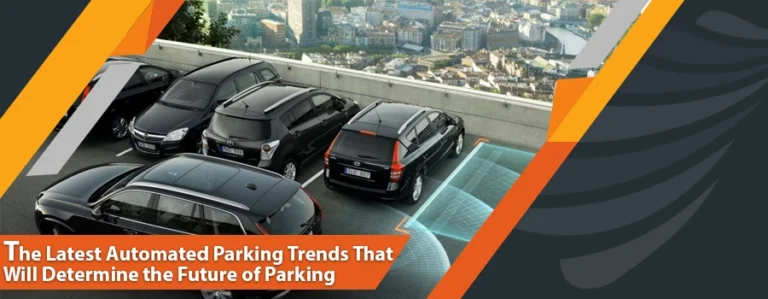Urban life is a daily struggle, from navigating traffic to ensuring personal safety. These challenges can often seem overwhelming. However, a glimmer of hope is on the horizon, a game-changing technology that holds the potential to transform urban living. This revolutionary force is IoT-driven smart infrastructure, set to redefine the functioning of cities and the way residents interact with their environment. Imagine a city where traffic lights adapt in real-time, public transport systems notify passengers about bus routes and arrivals, and vehicles receive instant alerts to optimize routes and avoid congestion. These are not just technological advancements but practical, effective solutions to the issues we encounter in our cities. Integrating IoT into urban infrastructure is the key to this, making it possible to enhance convenience and promote sustainability.
Let’s embark on a journey to the cities of the future, where smart infrastructure is leading the way to more efficient, livable, and vibrant urban spaces. Through engaging case studies and insights, you will uncover the significant influence of IoT on cities and the tangible benefits it offers to urban communities. More importantly, you will realize the power you hold in this transformation. Your active participation is not just welcomed but crucial to shaping the future of our cities.
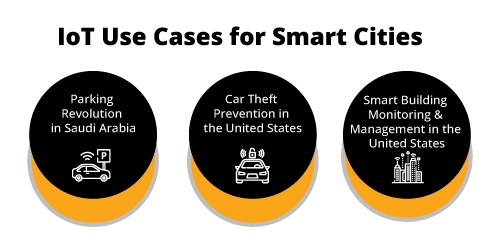
IoT Use Cases for Smart Cities
1. Case Study 1: Parking Revolution in Saudi Arabia
In response to the need for more efficient urban management, Saudi Arabian businesses and government agencies have partnered with IoT-based companies to implement solutions like ParkSmart for smart parking. The collaboration between Aramco and ParkSmart is particularly noteworthy, as it serves as a prime example of innovation, revolutionizing parking dynamics for patients, faculty, and visitors.
In addition to improving the parking experience, incorporating ParkSmart benefits Aramco by maximizing parking space utilization, lessening traffic, and boosting overall operational efficiency. ParkSmart’s cutting-edge features, including simple navigation, sophisticated pre-booking capabilities, digital payment methods, and shorter wait times for available spots, demonstrate Aramco’s dedication to delivering seamless services and improving the sustainability and intelligence of urban environments.
2. Case Study 2: Car Theft Prevention in the United States
Car theft is a recurring problem in Florida, where residents and visitors alike are drawn to the appeal of sunny beaches and energetic towns. Communities throughout Florida have resorted to state-of-the-art technology to implement strong security measures, such as automobile protection and discouragement of criminal activities. License Plate Recognition (LPR), a complex system that can scan license plates and identify cars in real time, is one such technology that is significantly reducing auto theft in the idyllic coastal city of St. Pete Beach, Florida. The deployment of OLIOS-LPR technology marks a significant milestone in the fight against car theft.
Installing OLIOS-LPR technology in St. Pete Beach is a critical turning point in the battle against auto theft. The OLIOS LPR system’s advanced algorithms and smooth integration have been crucial in fortifying the city’s security framework and augmenting law enforcement’s capacities. Since the OLIOS-LPR system was utilized, St. Pete Beach’s auto theft incidences have significantly decreased, making the area safer and more secure for locals and visitors.
3. Case Study 3: Smart Building Monitoring and Management in the United States
Smart building technologies are increasingly important for improving operational effectiveness, sustainability, and comfort. HIVE is an innovative technology and a state-of-the-art solution for all-encompassing smart building management and monitoring. HIVE is about to change how buildings are controlled and monitored in the USA. It will be installed in several buildings to enhance operational efficiency, security, and effectiveness.
With the integration of IoT sensors, data analytics, and automation, HIVE’s smart building technology offers real-time insights and control over a building’s numerous systems. HIVE provides a platform to monitor and control every facet of building operations, from energy usage and HVAC systems to lighting and security.
Useful Insights
The discussed case studies offer insightful information about the advantages and real-world uses of IoT-driven smart infrastructure. These revelations highlight how IoT technologies have the power to revolutionize the creation of more sustainable and effective urban environments.
1. Effectiveness and Optimization
IoT solutions like ParkSmart and HIVE demonstrate real-time data collection and analysis to optimize energy use and resource utilization. Regarding ParkSmart, the system effectively manages parking spots, ensuring they are as fully utilized as possible and lowering traffic and wait times. On the other hand, HIVE provides complete monitoring and control of all installed IoT devices, reducing electricity bills and security concerns and decreasing reliance on manual interventions by employees.
2. Enhanced User Experience
Technology like ParkSmart and OLIOS-LPR greatly improves user convenience. ParkSmart’s digital payment choices and pre-booking may make parking easier, eliminating the trouble of finding and paying for a spot. On the other hand, by enabling real-time vehicle identification and tracking, OLIOS’s LPR technology enhances security by reducing the likelihood of auto theft and assisting law enforcement in responding quickly to events. With more security, visitors and locals can feel safer in urban areas.
3. Sustainability
Smart infrastructure encourages sustainable habits by maximizing energy utilization. In line with more general environmental objectives, HIVE’s real-time energy usage monitoring and control contribute to reducing waste and carbon footprint. ParkSmart also reduces automotive emissions and their environmental impact by reducing the time cars spend looking for parking spaces. Such actions are necessary to create greener urban environments. We can say that IoT systems improve efficiency and lower fuel usage in garbage management by offering data on waste generation patterns and streamlining collection routes.
4. Data-Driven Decision Making
IoT technology gives planners and municipal administrators insightful data to help them make decisions. For example, information gathered from smart parking systems can identify trends in traffic flow and parking demand, which can inform policy and infrastructure planning in the future. Furthermore, real-time data allows urban management systems to quickly adjust to changing circumstances. For instance, intelligent traffic management systems can dynamically modify signal timings in response to current traffic circumstances to improve traffic flow and lessen congestion.
5. Predictive Maintenance and Longevity
Predictive maintenance is made possible by IoT-driven systems like HIVE, which use data analytics to spot possible problems before they become serious ones. By taking a proactive stance, downtime and maintenance expenses are decreased, extending the lifespan and dependability of urban infrastructure. Cities can also save money by avoiding significant repairs and attending to maintenance needs early on. These savings can then be put toward other important urban development projects.
6. Scalability and Adaptability
IoT technologies are suited for expanding metropolitan areas because they are scalable and adaptive. The long-term survival of these systems can be ensured by scaling and customizing them to fit changing needs as cities grow. Artificial Intelligence, machine learning, and 5G networks are just a few examples of the developing technologies that IoT infrastructure can easily interface with. Through integration, smart technologies can perform even better, increasing the intelligence and responsiveness of urban surroundings.
Challenges of Implementing IoT-Driven Smart Infrastructure in Urban Planning
1. Data privacy and security
Security and data privacy are major issues with IoT implementations. When IoT devices are used extensively, a lot of data is collected, which raises concerns about data protection and ethical use. Because of their interconnectedness, IoT systems are susceptible to cyberattacks; therefore, strong cybersecurity measures are required to guard against hacking, data leaks, and other unwanted activity.
2. Integration and interoperability
Another significant obstacle is interoperability and integration. Universal standards are necessary since the lack of uniformity among IoT platforms and devices makes seamless integration more difficult. Furthermore, it can be challenging to integrate new IoT technologies with legacy systems that are already in place and may call for considerable improvements or changes.
3. Cost and scalability
Issues with scalability and cost prevent IoT solutions from being widely used. Implementing an IoT system frequently entails significant upfront expenses for device procurement, installation, and training. Larger metropolitan regions may require ongoing investment and major infrastructure changes to expand these networks.
4. Data Management
Another difficulty is managing the vast volumes of data generated by IoT devices, which must be processed, stored, and evaluated. Advanced data analytics techniques and infrastructure are needed to manage this data effectively. Real-time data collection and integration of complex algorithms can help.
Future Aspects of IoT-Driven Smart Infrastructure in Urban Planning
Some of the future initiatives are:
1. Advancements in AI and Machine Learning
Looking ahead, advances in AI and machine learning will greatly aid the development of IoT. These technologies will make more advanced data analytics possible, improving resource management, decision-making, and predictive maintenance. AI will be used increasingly in IoT systems to automate tasks, decreasing the need for human interaction and increasing operational effectiveness.
2. 5G Connectivity
The 6G network rollout will greatly improve IoT capabilities. IoT infrastructure can be expanded in densely populated metropolitan areas, and faster data transfer and real-time communication between IoT devices and central systems will support a higher density of linked devices.
3. Sustainable Urban Development
Future IoT solutions will use green technologies to lessen their negative effects on the environment and to increase energy efficiency. By optimizing energy distribution and consumption, smart grid development will raise the sustainability of urban infrastructure even more.
4. Enhanced User Experience
A primary focus will be on the user experience, with IoT devices providing inhabitants with more individualized services to enhance their quality of life. For instance, smart houses can automatically learn user preferences and adjust settings. IoT will keep advancing public services like trash management, emergency response, and transportation, making cities more livable and accommodating to their citizens’ demands.
5. Global Collaboration and Standardization
In the future, the IoT will be driven by international cooperation and standards. International standards for IoT systems and devices will be developed to promote cooperation and interoperability across borders. Cities will collaborate to exchange ideas and best practices, propelling the global growth of smart urban infrastructure.
Conclusion
Integrating IoT-driven smart infrastructure is revolutionizing urban life, providing creative answers to urban life problems. IoT-driven technologies boost sustainability and efficiency and raise urban dwellers’ standard of living. As more cities implement IoT-driven smart infrastructure, the future of urban living promises to be more connected, efficient, and resilient, opening the door for a new era of smart urban administration.

